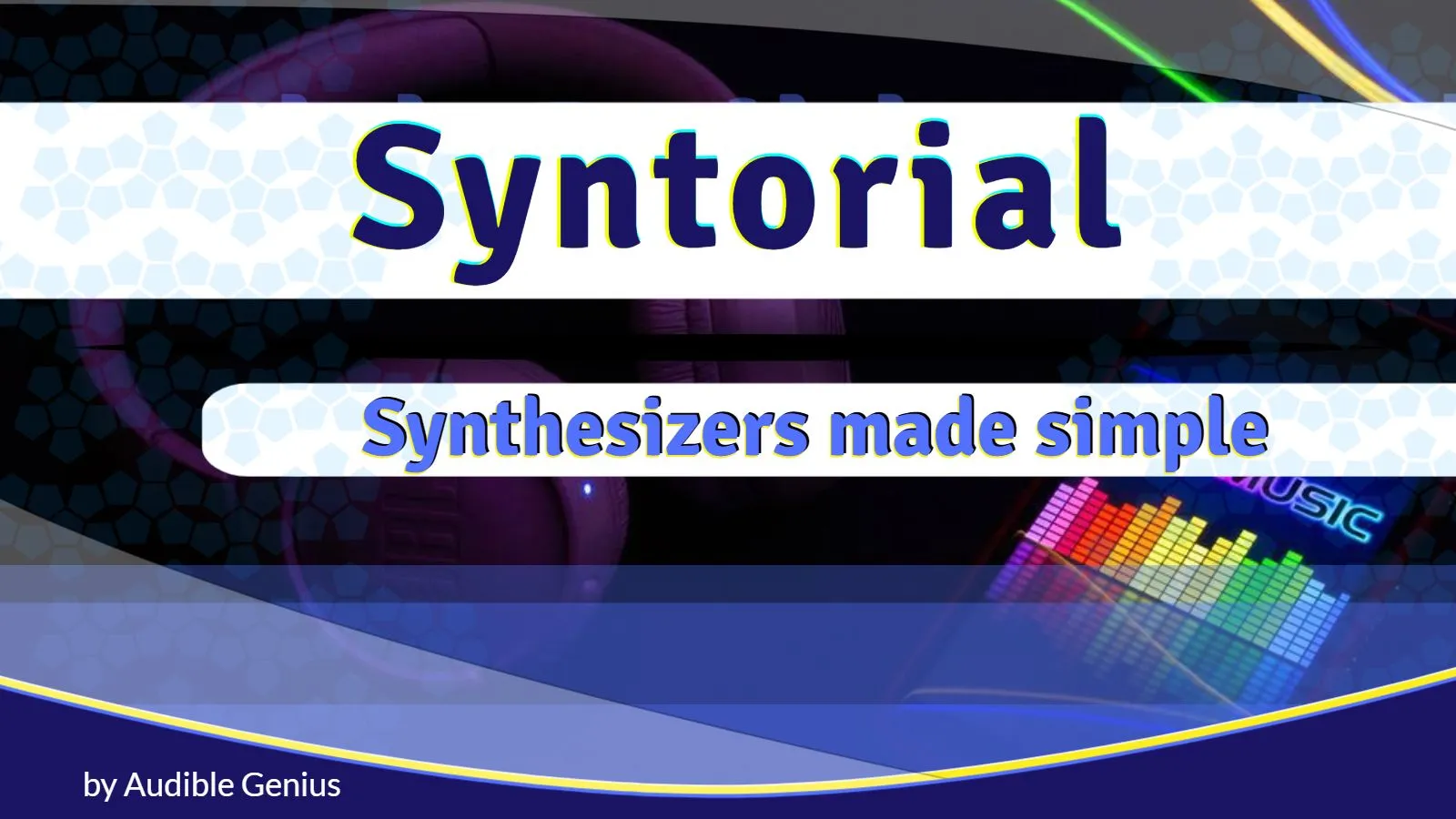Syntorial by Audible Genius
INTERACTIVE LEARNING
Syntorial doesn’t just show you how synth programming works. It engages you in 129 Interactive Challenges in which you program patches on a built-in synth. You aren’t just learning how to design sound, you are becoming a sound designer.
FOR MUSICIANS, NOT PHYSICISTS
Instead of talking about the science and physics behind synthesizers, Syntorial will show you how each control effects sound, as well as when, why and how you would use them when designing sounds. This is information that you can immediately apply to real-life situations.
IT’S ALL ABOUT THE EAR
One step at a time, Syntorial trains your ear to recognize how each control shapes and manipulates sound. By the end of the program you’ll be able to take the sounds you hear and re-create them, completely by ear.
SYNTH PLUGIN INCLUDED
Syntorial’s built-in synth, known as Primer, also comes as a VST/AU plugin, included with your purchase of Syntorial. This way you can take the very synth that you’re training on, and use it in any recording software that accepts VST and AU plugins.
EXPANDABLE
Along with the 199 core essential lessons that come with Syntorial, additional Lesson Packs expand your learning experience into other parts of the synth world.
SERUM LESSON PACK
MASSIVE LESSON PACK
SYLENTH1 LESSON PACK
Z3TA+ 2 LESSON PACK
MINIMOOG VOYAGER LESSON PACK
A Guide to Synthesizers
Definition of a Synthesizer
A synthesizer is an electronic musical instrument that produces sound by generating electrical signals. It is used to create and manipulate musical tones, timbres, and other sonic elements. Synthesizers are capable of producing a wide range of sounds, from realistic imitations of acoustic instruments to sounds that have never been heard before.
Types of Synthesizers
Synthesizers come in a variety of types, each with its own unique features and capabilities. Analog synthesizers use voltage-controlled oscillators to generate sound, while digital synthesizers use digital signal processing to create sound. Modular synthesizers are made up of individual modules that can be interconnected to create complex sounds. There are also hybrid synthesizers, which combine the best of both analog and digital technologies.
Parts of a Synthesizer
The main components of a synthesizer are the oscillators, filters, amplifiers, and envelope generators. Oscillators generate the basic sound waves, while filters shape and modify the sound. Amplifiers control the volume and other parameters of the sound, and envelope generators control the attack, decay, sustain, and release of the sound.
How to Connect a Synthesizer to a Computer
Connecting a synthesizer to a computer is relatively simple. First, you will need an audio interface, which is a device that allows you to connect audio devices to your computer. Once you have the audio interface, you can connect your synthesizer to it using standard cables. Then, you will need to install the necessary drivers and software for your audio interface.
How to Create Sounds with a Synthesizer
Creating sounds with a synthesizer is a process of experimentation. Start by playing with the oscillators, filters, and amplifiers to get a basic sound. Then, use the envelope generators to shape the sound and add texture. Finally, use effects to add depth and texture to the sound.
Common Synthesizer Effects
Synthesizers come with a variety of effects, such as reverb, delay, chorus, flanger, and phaser. Reverb adds a sense of space and depth to the sound, while delay creates an echo effect. Chorus adds a warbling effect, while flanger creates a sweeping effect. Phaser adds a swooshing effect.
Tips for Using a Synthesizer
When using a synthesizer, it’s important to experiment and explore. Don’t be afraid to try out different sounds and effects. Also, make sure to use headphones when playing the synthesizer, as this will help you hear the sound more clearly. Finally, take your time and have fun with it.
This website is advertising a product.
All Rights Reserved © jeremy hubert burt @ ishopdaily
This site is not a part of the Facebook website or Facebook Inc.
Additionally, This site is NOT endorsed by Facebook in any way.
FACEBOOK is a trademark of FACEBOOK, Inc.
Built with >>GroovePages™
.
.

